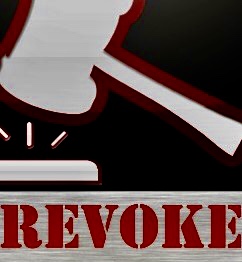An executor was removed for improper behavior as executor, including lack of impartiality and conflict of interest in the decision Browne v. Browne Estate 2014 BCSC 656.
The parties were half siblings, and by her will, their mother divided the estate equally between the parties.
After the mother’s death, and without obtaining probate, the respondent executrix used power of attorney (which in law should have ceased upon death) to sell the residence for $750,000 .
The executrix then applied one half of the net proceeds against her husband’s line of credit and deposited the balance and to investment accounts. She then through counsel made an offer of settlement to her half-sister to settle the estate without obtaining probate, and conditional upon the opposing half-sister not contesting her “suspect” accounting .
The executrix claimed total expenses of $257,000 which she felt entitled to before providing personal care to the deceased for the last five years .
The petitioner half sibling applied to the court and obtained an order removing the executor on the basis that she was unable to act impartially, that the accounting was at best cursory, and that the claim for expenses were largely an unexplained without any supporting documentation.
The actions of the executor therefore demonstrated a lack of fidelity to the beneficiaries and underscored her potential conflict of interest because of her significant claim on the estate is a creditor.
Lastly the improper use of a power of attorney to deal with assets of the estate, rather than applying for probate, was a clear indication of her unwillingness to act as executrix.
Legal Framework
[37] The general test for removal of trustees/executors is set out in Letterstedt v. Broers (1883-84) L.R. 9 App. Cas. 371 (South Africa P.C.) at 385-389. Lord Blackburn says:
[The] main guide must be the welfare of the beneficiaries…The acts or omissions must be such as to endanger the trust property, or to show a want of honesty, or want of property capacity to execute the duties, or a want of reasonable fidelity.”
[38] Lord Blackburn stated at 387:
In exercising so delicate a jurisdiction as that of removing trustees, their Lordships do not venture to lay down any general rule beyond the very broad principle above annunciated, that their main guide must be the welfare of the beneficiaries. Probably it is not possible to lay down any more definite rule in a manner so essentially dependent on details often of great nicety. But they proceed to look carefully into the circumstances of the case.
[39] Letterstedt was followed in Conroy v. Stokes, [1952] 4 D.L.R. 124 (B.C.C.A.) at 127.
[40] As noted by Donovan Waters, Q.C. in Water’s Law of Trusts in Canada Fourth Edition at 898:
… it is clear that much will turn on the facts of the particular case, and it is only by an analysis of the cases that the manner of application of those guidelines can be seen. The dishonesty of the trustee is an obvious ground for his removal. It is the gravest breach of trust, but dishonesty can extend beyond the situation where the trustee appropriates the trust property for himself to the situation where he has a discretion as to the division of the fund between himself and … other persons, and allocates to himself the lion’s share.
[41] Courts are reluctant to remove an estate trustee. A priority is to respect the testator’s decision in appointing that person: Veitch v. Veitch Estate, 2007 BCSC 952.
[42] Animosity or hostility between an executor and a beneficiary is not sufficient on its own to warrant removal as an executor: Letterstedt at 389
Other blogs on disinherited.com relating to the removal of an executor/ trustee are as follows :
1. April 10, 2014 – WESA Provisions for Removal
2. November 2, 2013 – Removal of an Executor/Trustee
3. November 19, 2013 – Removing and Replacing Executors and Trustees
4. October 10, 2013 – The 5 Criteria Necessary for Removal of a Trustee
5. August 17, 2012 – Borrowing Against Estate Assets Personally
6. November 8,2011 – Lack of co operation with co executor
7. May 29, 2011 – Removal for Conflict of Interest
8. April 12, 2011 – Court Removes one Co-Executor in Deadlock between Two
9. February 4, 2014 – For Selling Assets Below Market Value and Benefiting Personally
10. April 21, 2014 – Removal for Conflict of Interest





